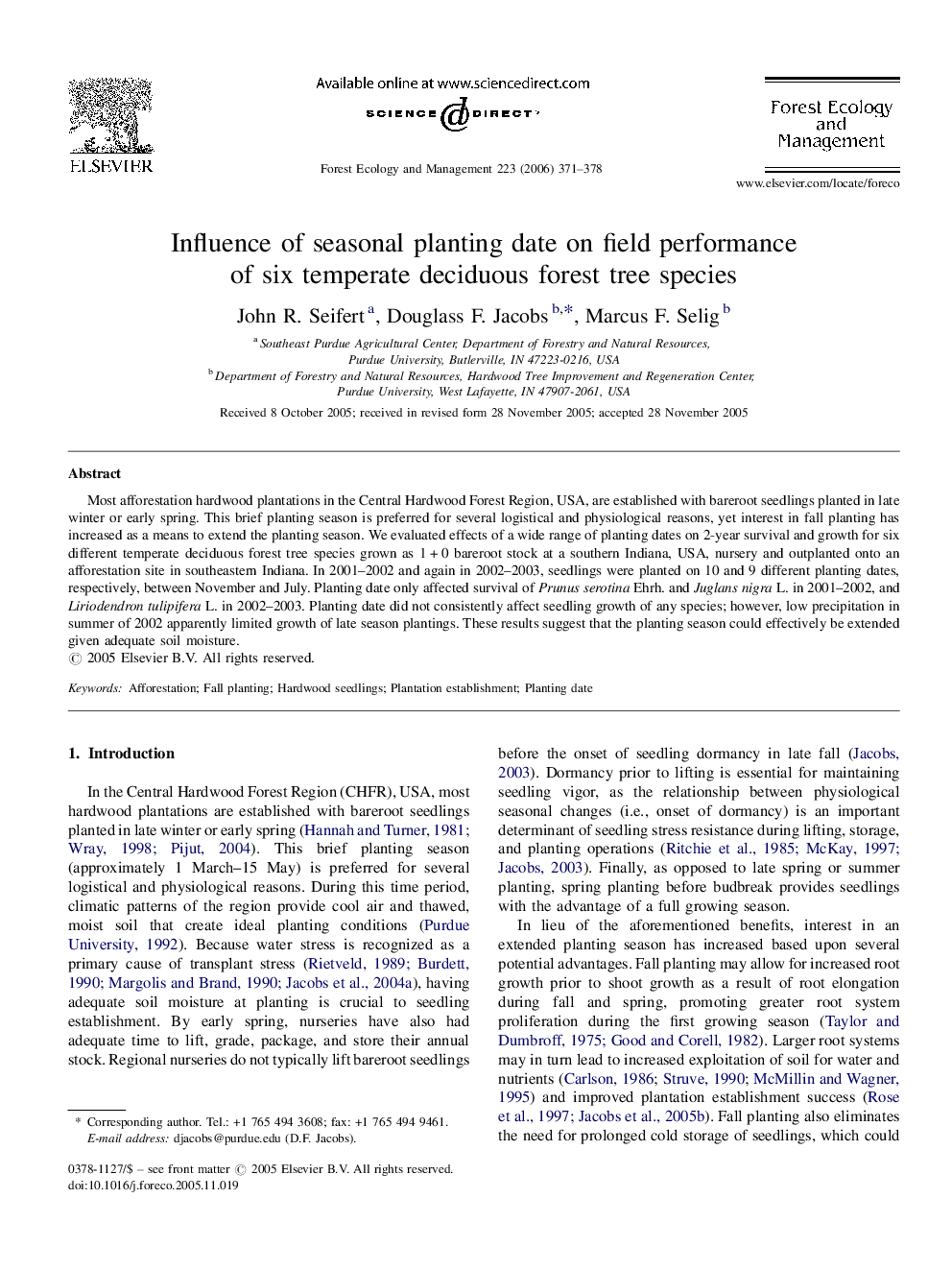| Article ID | Journal | Published Year | Pages | File Type |
|---|---|---|---|---|
| 90607 | Forest Ecology and Management | 2006 | 8 Pages |
Most afforestation hardwood plantations in the Central Hardwood Forest Region, USA, are established with bareroot seedlings planted in late winter or early spring. This brief planting season is preferred for several logistical and physiological reasons, yet interest in fall planting has increased as a means to extend the planting season. We evaluated effects of a wide range of planting dates on 2-year survival and growth for six different temperate deciduous forest tree species grown as 1 + 0 bareroot stock at a southern Indiana, USA, nursery and outplanted onto an afforestation site in southeastern Indiana. In 2001–2002 and again in 2002–2003, seedlings were planted on 10 and 9 different planting dates, respectively, between November and July. Planting date only affected survival of Prunus serotina Ehrh. and Juglans nigra L. in 2001–2002, and Liriodendron tulipifera L. in 2002–2003. Planting date did not consistently affect seedling growth of any species; however, low precipitation in summer of 2002 apparently limited growth of late season plantings. These results suggest that the planting season could effectively be extended given adequate soil moisture.
